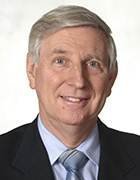
WavebreakMediaMicro - Fotolia
Improve data center efficiency with these 3 steps
As applications require more computing power, enterprises need to ensure they maximize their data centers. These three steps can improve data center efficiency.
Data centers: They're hot, they're cold and they require more than wishful thinking to ensure efficiency. The key is to properly maintain their temperature and power utilization.
In 2018, power usage in the data center reached an average of 2,751 kilowatts (kW), according to Maggie Shillington, cloud and data center analyst at IHS Markit. That number could reach 3,670 kW by the end of 2019, largely driven by applications and analytics that require more processing power.
Building the data center out to accommodate this increased power consumption isn't always the best option, however. Enterprises are responding by deploying intelligent rack power distribution units (PDUs) and data center infrastructure management (DCIM) that can better monitor the data center environment, Shillington said in a recent webinar on improving data center power and cooling.
In general, IT teams can follow three steps to improve data center efficiency:
- monitor the environment
- avoid hotspots
- find stranded power capacity
1. Monitor the environment
The first step to improve data center efficiency is to monitor the equipment, as well as the physical racks and cabinets on which the equipment sits. IT teams should try to measure and collect information about power usage at the cabinet, rack and device level, said Ashish Moondra, senior product manager of power, electronics and software at Chatsworth Products, an IT infrastructure supplier based in Agoura Hills, Calif. Enterprises should also control power to each outlet so they can better control provisioning, capacity and rebooting, he added.
For a deeper level of monitoring, IT teams can implement intelligent rack PDUs and DCIM software. These tools provide information about reducing energy consumption and the best locations to install new servers based on power, humidity or temperature considerations. Teams can monitor the overall data center layout, power utilization and workload distribution among IT equipment. They should also set up notifications, alerts and warnings for noncritical or critical events.
While intelligent rack PDUs offer some benefits, Moondra said they also present some challenges, such as PDU networking. Many IT teams avoid putting PDUs on the network because designating an IP address for each one gets costly -- sometimes reaching $500 per port, he said. To minimize costs, IT teams can consolidate IP addresses.
"Intelligent PDUs allow for IP address consolidation so you can manage several PDUs together -- 32 [PDUs] can be under a single IP address," he said. This consolidation significantly reduces the number of IP addresses required. But IT teams need to ensure they assign primary and alternate PDUs for failover redundancy in case of broken network connections, he added.
2. Avoid hotspots
The second step in improving data center efficiency focuses on data center temperatures and humidity. To manage data center temperatures, IT teams should prioritize proper airflow management, instead of simply adding cooling capacity, Moondra said. Unmanaged airflow can create hotspots within the data center and limit rack density and capacity.
To combat this, teams should direct cool air so it reaches IT equipment, using filler panels and containment strategies. This helps maintain control over inlet temperatures and reduce the volume of cool supply air, he said. Further, teams should ensure hot exhaust air doesn't mix with cool air.
IT can use sensors to monitor temperatures at the top of the cabinets and compare the results with site standards or those from the American Society of Heating, Refrigerating and Air-Conditioning Engineers, he added. Additionally, IT teams should look for integrated environmental monitoring, which can better track equipment performance and humidity levels. Enterprises considering intelligent rack PDUs should look for ones that can handle a minimum of 140 degrees Fahrenheit.
3. Find stranded power capacity
Another way enterprises can improve data center efficiency is to locate servers with untapped power, as this wastes valuable compute. These ghost servers consume power but don't perform any workloads, Moondra said.
To pinpoint any potential ghost servers, IT teams should look at the CPU usage of their servers and determine if they have leftover capacity.
"Make sure you're not exceeding the threshold you've set or barely using any of the capacity budget you have available," Moondra said.
This is where monitoring tools and intelligent rack PDUs can help because they provide information about available capacity and possible effects of deploying additional servers, he added. Once IT teams find the unused server power, they can consolidate servers and applications and better balance the workload across the data center equipment.







